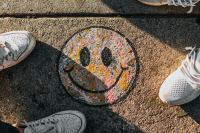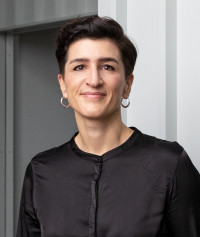What comes after user experience? Positive Design
by Dr. Anna Pohlmeyer
With Positive Design to individual and social value, better products and new business opportunities.
What makes you happy? What things increase your well-being in the long term? Most users find it difficult to answer these questions. And so do most designers.
The primary design goal in many product development processes was and is the perfectly executed user experience. But what comes after that? What turns a working product into a good product? How do you turn a "There's nothing to complain about" into a "This is important to me"?
Things today have to offer more than mere purpose fulfillment. They should be designed to support our happiness and help us live a good life. The evolution is from satisfaction to well-being. From short-termism to long-termism. From user experience to human experience.
Positive Design addresses this very point. It builds on the insights and principles of positive psychology. Positive Design uses a possibility-oriented approach to innovations and creates physical and digital products and services that enhance the well-being of users in the long term.
From problem to possibility
Interaction design in recent years has focused primarily on finding technically flawless solutions to user problems. This focus brings with it several limitations. For one thing, eliminating weaknesses in the user experience usually leads only to incremental improvements. On the other hand, solutions that can only be traced back to technical adjustments are easy to copy and only offer a very short-term competitive advantage.
In Positive Design, there is a conscious decision not to try to reduce the problem directly. Instead, the process focuses on finding ways to use products and services to create positive experiences. Where before there was only one concrete solution to a concrete problem, this creates a multitude of possible new solutions. Often, the core problem is solved much more sustainably or even becomes obsolete through this indirect route. Above all, it creates space for innovations that offer individual and/or social added value on the one hand and potential for differentiation on the other.
Take Deutsche Bahn's train delays, for example. In order to increase punctuality, a great deal of money is invested in track rehabilitation, timetable design, etc. The perceived improvement for the individual passenger? Limited. But what if investments were made not in travel time reduction, but in the design of that time? The shift in perspective to the travel experience offers a wide range of new innovation opportunities. In some cases, increasing travel time is even welcomed.
Positive Design also offers another very significant advantage: it increases users' tolerance for error. Meaningful experiences are perceived as valuable despite their lack of technical perfection. Video conferencing tools, for example, haven't gone through the roof in recent months because they offer a technically flawless solution to a problem. They are so popular because they create the opportunity for us to be close despite physical distance. This enhances our sense of well-being even when the connection hangs now and then or the picture wobbles.
This doesn't mean that UX doesn't matter anymore. On the contrary. UX is still critical to success, but it comes second in the process. Only when the experience is clearly defined and conceptualized are appropriate design recommendations derived in terms of UX.
Search fields for Positive Design
Products that permanently enhance our well-being are subject to universal principles and can work in different ways. Overall, products can support well-being by fulfilling (at least) one of the following four roles (Design for Happiness, Pohlmeyer 2012):
- Products as sources of well-being: Some products elicit positive responses directly, e.g., through their aesthetic design or playful interaction.
- Products as symbols: Things represent our values and ideals in life. Wedding rings fall into this category. Souvenirs or gifts from a special person can also become valuable artifacts.
- Products as companions: Things can support us to live the life we would like to live. Some time ago, fitness bracelets were very popular in this category. Products that support our mental health can also fall into this category.
- Products as enablers: Products can enable experiences that in turn lead to well-being. However, without these products, the experience would not be possible. For example, to go sailing, I need a sailboat.
These categories give rise to search fields for Positive Design that go far beyond a direct one-to-one relationship of the product as the source of well-being. Products have the best chance of enhancing our well-being in the long term if they enable experiences. It is true that if you know what moves a person, what values are important to him/her, you can evoke emotions in a targeted way. In interaction with basic psychological needs, it is possible to design not only practical products, but also joyful and meaningful experiences through products.
Positive Design for happy designers
Positive Design brings human experiences and emotions into the focus of product development. The approach creates new spaces of possibility for innovation and differentiation. It answers the question of what comes after the perfectly executed user experience and points the way to an ethical understanding of design as well as to new business opportunities. Not to mention all that: As a designer, what could be better than helping people with being happy?
About the author:
Dr. Anna Pohlmeyer is a Senior Experience Researcher at diffferent and one of the pioneers and leading scientific voices in the field of Positive Design. She served as co-director of the Delft Institute of Positive Designat TU Delft for eight years and is a board member of the **Design Research Society Special Interest Group on Design for Wellbeing, Happiness and Health.
We are happy to receive project inquiries
Jana Kamm,
Senior Managerin Corporate Communications



